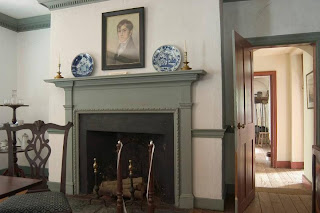There are several problems with replacement windows from a "green" perspective. Primarily because no one from the replacement window industry talks about the entire energy life-cycle of a replacement window that includes manufacturing the window, transporting it, and disposing of it when its useful life is over. Here are some "green" issues to consider:
- They are expensive - with estimates for payback periods through energy savings of between 20 and 40 years (and some even longer). And guess what...the windows won't last that long, so you'll be on your next set of replacement windows before you're done paying for the first ones! (see below)
- They cannot be repaired (maybe this is why they are called "maintenance free"!)
- Their seals will fail after about 15 years - sometimes sooner - though it's usually after the warranty has expired. Then you'll need to replace your replacement window!
- New windows require a lot of energy to manufacture, uses up natural resources (wood), and introduces toxic chemicals into the environment during the manufacture of vinyl, and again when the failed window is taken to the dump. They also have to be transported to your site - often from across the country requiring use of fossil fuels and adding to air pollution.
- Wood used in new windows is "new-growth" wood. Because it grows so quickly, it's softer and less resistant to deterioration and insect damage than old-growth wood that was used to manufacture older and historic windows.
- Old windows that are being replaced end up in landfills. Besides taking up space in the landfill, it can also introduce lead into the environment (you don't really think all those contractors are mitigating the lead paint before dumping those old windows do you?)
- The money you spend on buying replacement windows leaves your local economy (unless you live in a town where a window manufacturing plant is located and buy them from a locally-owned retailer).
From a historic preservation perspective, it's pretty simple...They're not your original windows - they are a substitute. And they look like a substitute! They don't match the look of your house. Windows are very important in defining the character of buildings - change the windows and you'll dramatically change the appearance of your house.
In general, a much "greener" and better alternative is to fix up your original single-pane windows. Regardless of what the replacement window manufacturers tell you, single pane windows with a storm (interior or exterior) and some judicious use of caulk can be as efficient as a new replacement window. In some cases they provide better efficiency because the insulating factor of a window comes from the air (or other gas) between two pieces of glass. Since the space between a single pane window and its storm is wider than the space between two pane of glass in a replacement window, its insulating factor is higher.
Also, if you repair your old windows so that both the top and bottom sashes are working, then in warmer months when you raise the lower sash to let cool air in, you can also lower the top sash to let warm air out. This natural ventilation system will keep your house cooler and reduce those giant electricity bills for air conditioning!
The National Trust for Historic Preservation is on top of this window issue and is working to get the Obama Administration to understand it. They have a lot of resources available online for homeowners and other historic property owners. Check our their Weatherization Guide for Older and Historic Buildings at http://www.preservationnation.org/issues/weatherization/
At our historic sites, we'll be tackling some window projects at the Amstel House after the holidays. The primary window project is the installation of interior storm windows throughout the building. These interior storms will help us with improving the energy efficiency of our historic single pane windows and limiting UV light to the interior (which damages objects over time). We'll also be doing our share of caulking as well as adding insulation to attics and cellars.
We're looking into scheduling a workshop to discuss storm windows and maybe glazing repairs sometime in January or February (stay tuned for more info about that).




















































